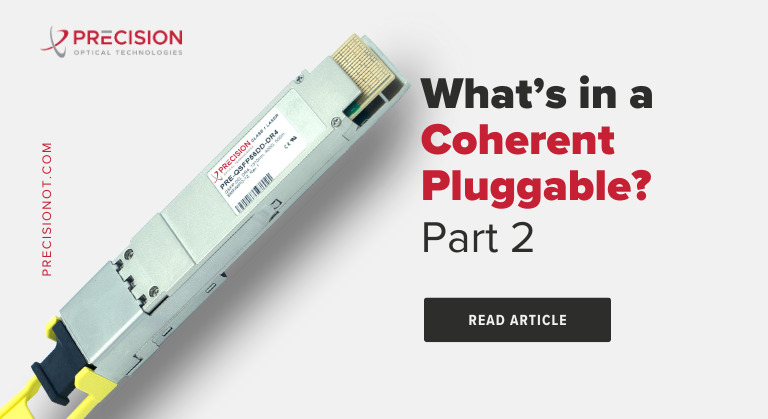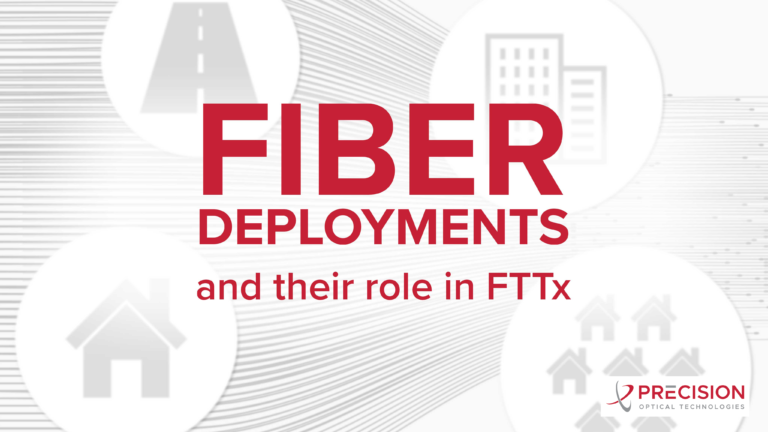
A Network Engineer’s Quick Guide to FTTx Evolution

A Network Engineer’s Quick Guide to FTTx Evolution
FTTx has many different applications and is heavily utilized throughout last mile deployments. The FTTx market is estimated to grow to $14.31 billion USD by 2023, at a CAGR of 8.10% from 2018 to 2023. Fiber optic architectures are equipped with optical fiber throughout long-distance segments of the network. For end deployment sectors that cover distances from the telecom facility (central office) to the end user, metal/copper cabling is generally used. FTTx, or “Fiber to the X,” represents the various types of end deployment architecture available. Types of FTTx we will cover include: FTTN (Fiber to the Node) and FTTH (Fiber to the Home).
Fiber to the Node
1. FTTN: Also known as Fiber-Deep, Fiber to the Node deployments feature optical fiber that terminates at a node that lies only a few miles from the customer. From the node, copper or coax fiber spans in branches to the end user. Within the overarching FTTN designation, a few sub-categories exist. 1. FTTC: A type of FTTN, Fiber to the Curb/Fiber to the Cabinet consists of fiber optic cabling ending within a short distance to the end user (usually around 300 yards). It is a similar deployment structure to FTTN.
2. FTTB: In a Fiber to the Building/Fiber to the Basement deployment, optical cabling ends directly at the building. Yet, it is different from the typical Fiber to the Home scenario. FTTB deployments are often used to connect apartment blocks or other large buildings. In these cases, service providers bring a fiber line to a node within a building’s communication room. From there, they leverage existing copper wiring to provide network connectivity to each office or apartment within the overall building. Compared to FTTN and FTTC, FTTB is as close as network operators can get to FTTH while still using a node architecture.
Fiber to The Home / Fiber to the Premises
Fiber to the Home, also known as Fiber-to-the-Premises (FTTP), deployment occurs when optical cabling ends directly at the individual home or business. Fiber optic cables and optical electronics connect customers directly to a network without the need for copper.
There are several types of FTTH network structures that vary based on their transport protocol and how the data is encoded and transmitted. These include Home Run, Active Star Networks and Architecture Passive Optical Networks (PON).
FTTH: Home Run
The Fiber to the Home: Home Run deployment is structured with a dedicated fiber from the central office to each home. Therefore, the data on it is exclusive to the customer. Although it offers the most flexibility out of all FTTH types, it is also the most expensive. FTTH: Home Run uses active Ethernet (AE) splitting, which relies on wave division multiplexing (WDM) technology and ethernet switches for data transmission. This deployment type is commonly used for small developments and rural areas.
FTTH: Active Star
The Active Star deployment contains a multifiber cable leading from the central office to a local switch. From there, the fiber leads to homes and businesses individually. This method is flexible and slightly less expensive than the Home Run Architecture. Essentially, the Active Star deployment is FTTC without copper cabling at the end portion of the deployment.
FTTH: Passive Optical Network (PON)
PON is a complex network structure in the way that it uses several PON applications including WDM PON, GPON and EPON.
WDM PON is a passive optical access network technology that transmits traffic on different wavelengths along the same fiber. In other words, it enables network operators to serve multiple destinations, each with a specified wavelength. Using passive splitters, WDM-PON essentially creates a point-to-point architecture on a physical point-to-multipoint topology.
As an ITU-T published standard, GPON (gigabit-capable PON) uses GEM encoding and an IP-based protocol to enable voice, video and data transmission at data rates up to 2.5Gb/s. This method leverages Wavelength Division Multiplexing so that a single fiber can be used for both upstream and downstream data transmission. It has primarily been used by telcos on a global scale. However, as bandwidth demands continue to surge, these organizations are becoming increasingly interested in next generation standards. When categorized from most advanced to most incremental, these include NG-PON2, XGSPON and 10GPON/XG-PON.
1. NG-PON2, developed in 2015, uses time and wavelength division multiplexing (TWDM). This standard not only uses different wavelengths on one fiber, but it also splits transmission into time slots for increased capacity. As a result, it can provide minimum capacities of 40Gb/s downstream and 10Gb/s upstream. Nonetheless, NG-PON2 is not widely deployed as it requires an investment in new, more advanced optical networking equipment across existing access networks. As a result, many network operators are eager to take a more incremental approach in advancing their GPON services.
2. In many ways, XGSPON solves for this challenge by essentially offering a reduced feature set of NG-PON2. This WDM-based standard enables symmetrical downstream and upstream capacities of 10Gb/s. Like NG-PON2, XGSPON allows for a seamless overlay to an existing GPON. Nonetheless, it currently presents a more cost-effective option for many organizations because it allows for network operators to use more affordable fixed optics.
3. Perhaps the most incremental NG upgrade to an existing GPON comes in the form of XG-PON or 10GPON. Developed in 2010, this standard offers asymmetric downstream and upstream capacities of 10Gb/s and 2.5Gb/s. Though XGS-PON is compatible with XG-PON and XGS-PON ONUs, XG-PON can only serve XG-PON ONUs. Nonetheless, both XG-PON and XGS-PON represent popular choices for telcos looking to advance their networks to meet future bandwidth demands.
Lastly, EPON (Ethernet PON), also referred to as GEPON (Gigabit Ethernet Passive Optical Network) is an IEEE developed PON standard. Compatible with other Ethernet standards, it easily connects with any type of IP-based communications and is thus cost-effective to implement. Standard EPON can support data speeds of up to 1.25Gb/s while 10G-EPON facilities speeds up to 10Gb/s. This technology is also available in symmetric and asymmetric types. Asymmetric EPON generally enables downstream and upstream speeds of 10Gb/s and 1Gb/s respectively. Compatible with low-cost optics, EPON remains a technology of choice for MSOs and other access network operators.
WHY FTTH?
Fiber to the home is a future proof method of fiber optic deployment; since it is a passive network with no active components, it requires minimal network maintenance costs. FTTH also eliminates the need for a DC power network and provides revenue-generating services such as voice, high-speed data, video on demand, etc. FTTH has the capability to provide enough bandwidth reliability at a low cost. This is what will allow FTTH to meet future consumer demand.
The Precision OT Difference
Precision OT is proud to offer optical transceivers to support various FTTx applications. View our GPON SFP product offering here or contact us to speak with an expert.






